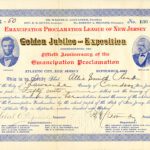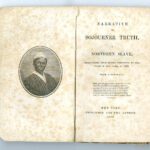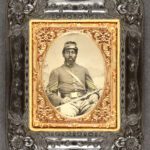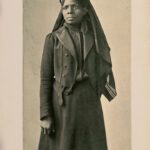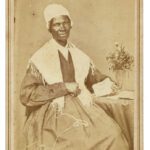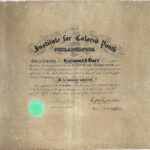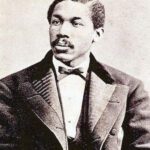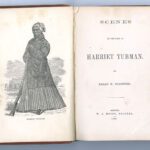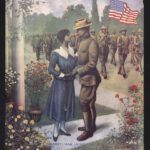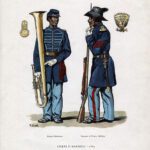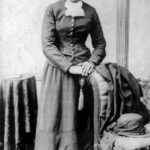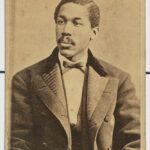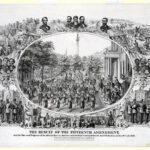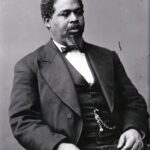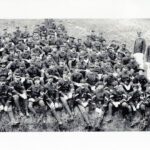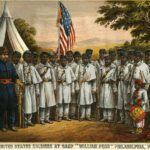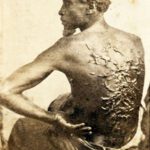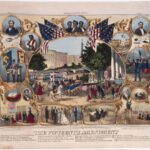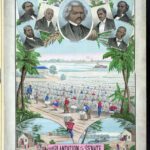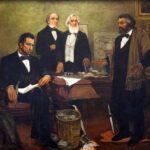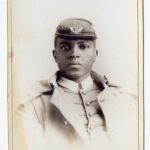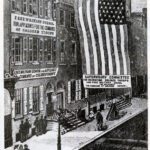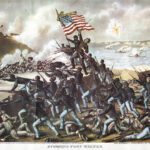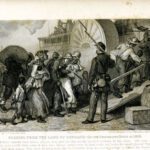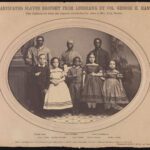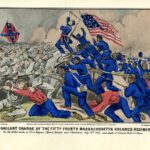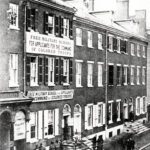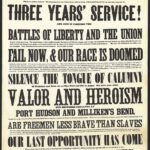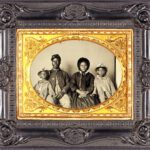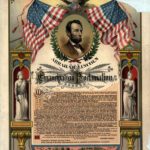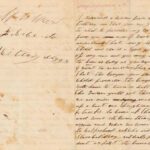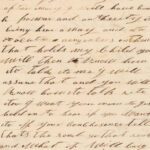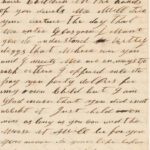
Spotswood Rice was born in Virginia in 1819. He was sold to Benjamin Lewis at age thirty in Howard County, Missouri. There, he was a tobacco roller. Missouri was considered a border state during the Civil War. Slavery was legal, but the state remained in the Union and did not join the Confederate States. When Abraham Lincoln issued the Emancipation Proclamation, which went into effect on January 1, 1863, slaves in Missouri were not emancipated. The Proclamation only liberated slaves in states and areas still in rebellion and not under the Union’s control. In essence, it was a future emancipation and did not apply to border states and areas already under the Union’s control.
Spotswood Rice escaped enslavement and enlisted in the 67th US Colored Infantry in Glasgow, Missouri, in 1864. His wife, Arry Ferguson, and his daughters, Cora and Mary, were still enslaved by the Diggs family of Madison County, Missouri. They had not been granted their freedom, even though Rice had offered to pay for their freedom. An enraged Rice wrote a scornful letter to Kitty Diggs — the woman enslaving his daughter Mary.
Rice wrote the letters from his hospital bed in Benton Barracks Hospital while suffering from rheumatism. Even though he was weakened, his family’s liberty was around the corner. Kitty Diggs’ brother, F. W. Diggs, enslaved Rice’s other daughter, Cora. Kitty was irate with the letter. She had her brother send a formal complaint to Union General William Starke Rosecrans, Commander of the Department of Missouri, demanding that Rice be re-assigned out of state for his impertinence.
Fortunately, Rice was eventually reunited with his entire family. The Federal Census data from 1870 and 1880 showed Rice living with his wife and children. Rice and Arry had an additional child in the 1880 census. Rice became a Christian pastor. He purchased land and founded the first Black church in New Mexico. Alas, Arry died in 1888, and he then married Eliza Lightner. He left Albuquerque and planted African Methodist Episcopal churches all around the territory of New Mexico. He lived to 88 and died on Halloween in 1907. His daughter, Mary, married and became Mary Bell. She related this story in the WPA (Works Progress Administration) slave narratives from the 1930s.
As the teacher, go over the PowerPoint prior to the lesson to get a sense of the flow of the activities.
New Jersey Student Learning Standards
- 6.1.8.HistoryUP.5.b: Examine the roles of women, African Americans, and Native Americans in the Civil War.
Curriculum
- 3 Sections
- 3 Lessons
- Lifetime
- Stage 11
- Stage 21
- Stage 31
